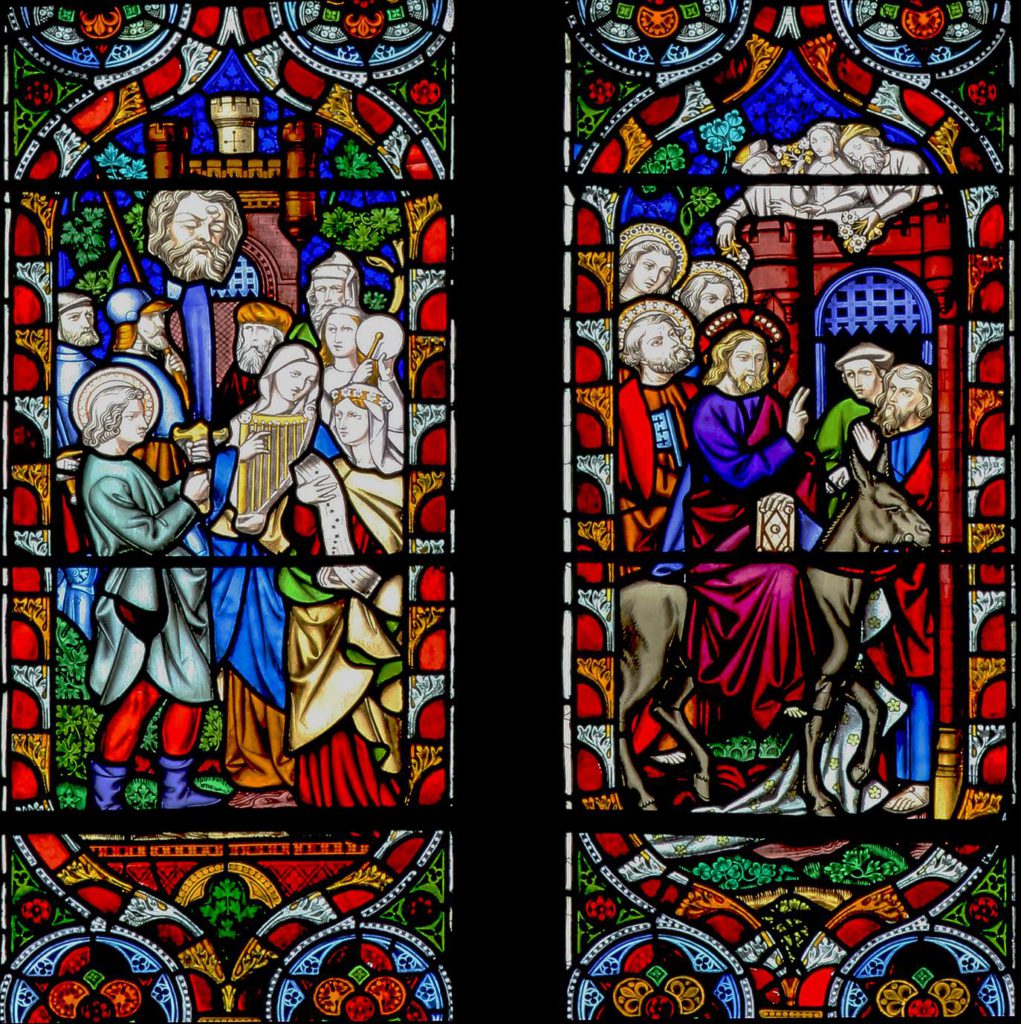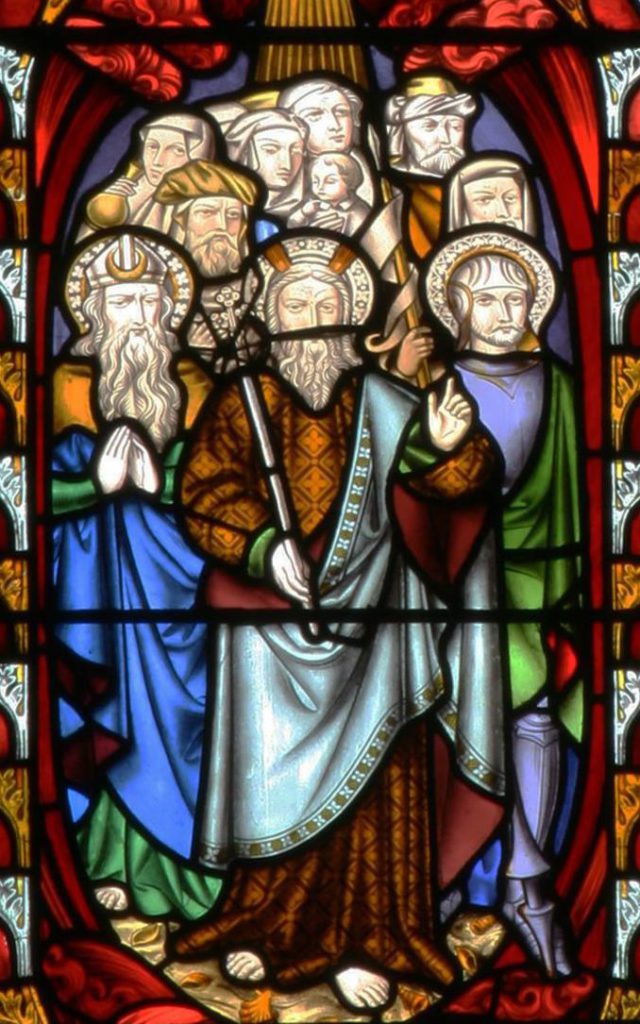
Parting the Red Sea and Baptism
Starting at the top left, Panels 1 and 2, respectively, show Moses leading the Israelites out of captivity in Egypt by parting the waters of the Red – or Reed – Sea and the Baptism of Christ.
The culmination of the Israelites escape comes in Chapter 14 of the Book of Exodus in the Old Testament:
Exodus 14: 19-22 describes how Moses stretched out his hand over the sea and the waters parted, allowing the Israelites to escape the Egyptians.
In the New Testament, St Paul draws a parallel between the Exodus and Christian Baptism in his First Letter to the Corinthians (1 Corinthians 10:1-4) where he likens the crossing of the Red Sea to baptism.
Christ’s own baptism is described in Matthew’s Gospel (Matthew 3:13-17).

Jerusalem’s Two Triumphal Entries

On the same row, we see two triumphal entries into Jerusalem. Panel 3 shows the future King David entering Jerusalem after defeating the Philistine giant Goliath.
David has Goliath’s severed head impaled on the giant’s own sword and is shown being welcomed into Jerusalem by women singing and dancing and is loosely based on a scene described in the First Book of Samuel (1 Samuel 18: 6).
David’s entry pre-figures Christ’s entry into Jerusalem, described in all four New Testament Gospels (Matthew 21: 7-9, Mark 11: 7-10, Luke 19: 35-38 and John 12: 12-16) and illustrated in Panel 4.
Here, Christ enters Jerusalem riding a donkey as people spread their cloaks on the road and stew flowers and palm branches in his path as a sign of respect.





